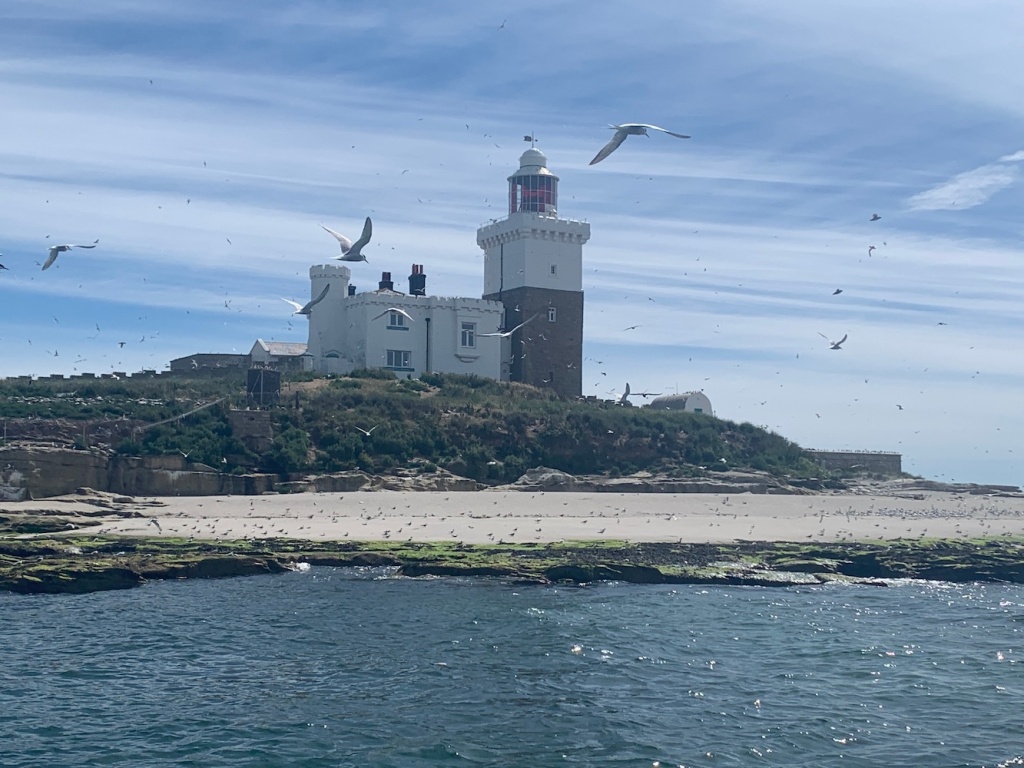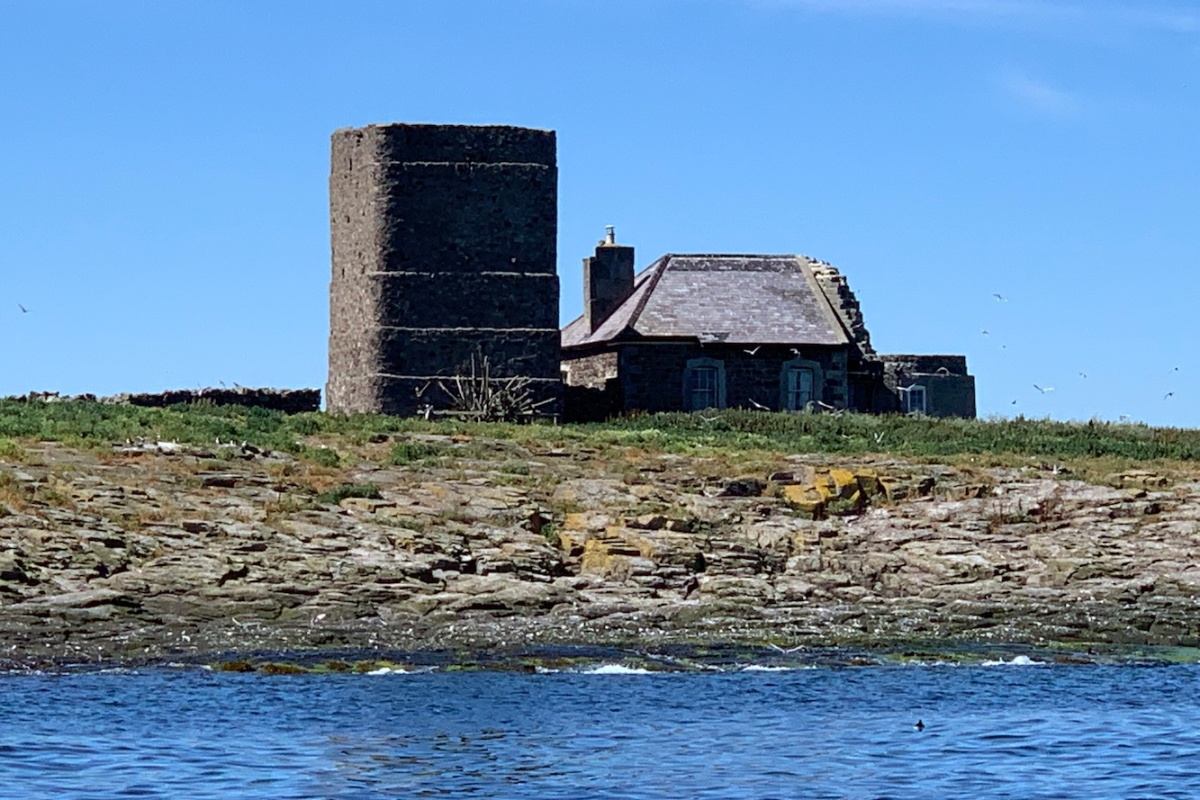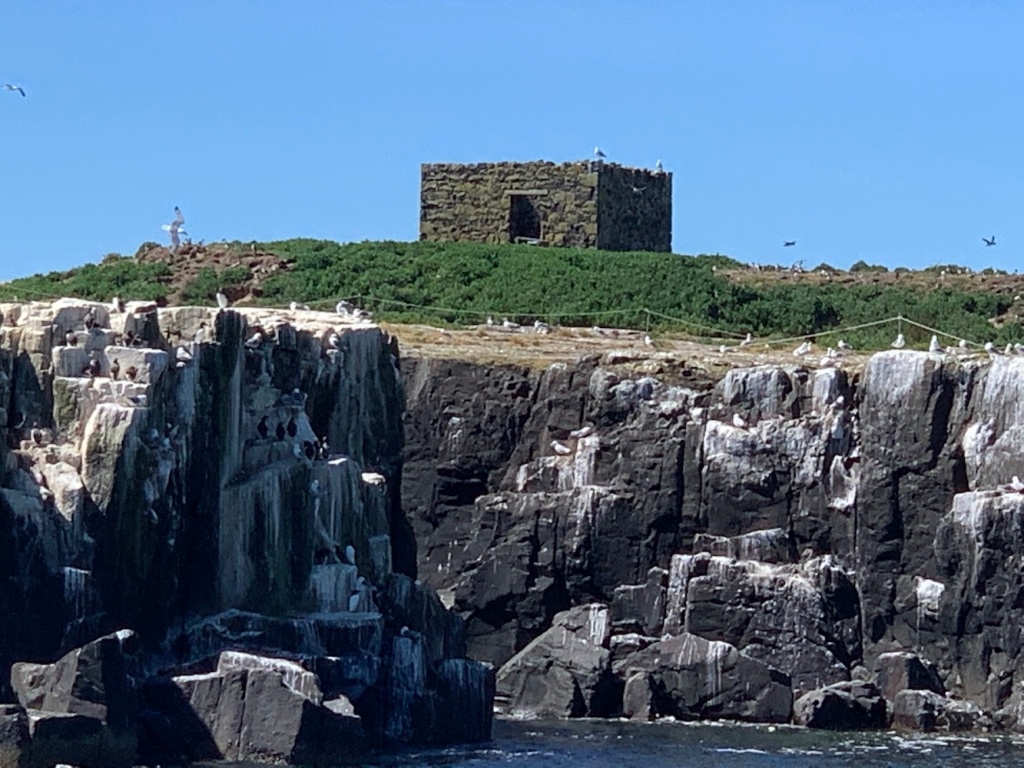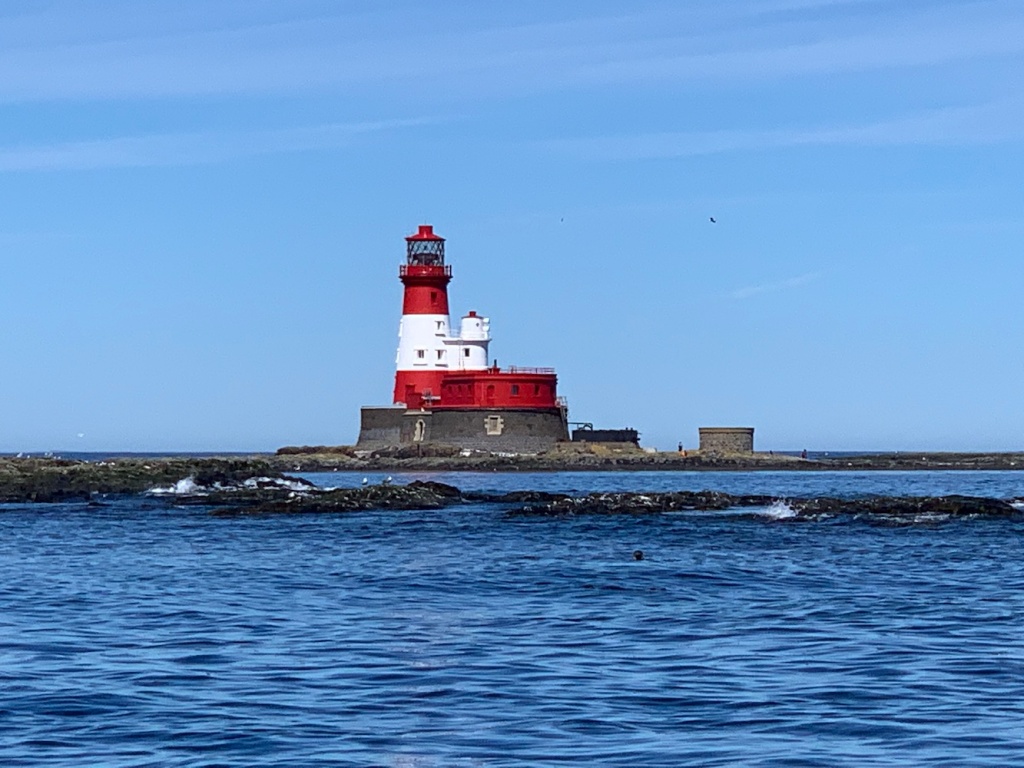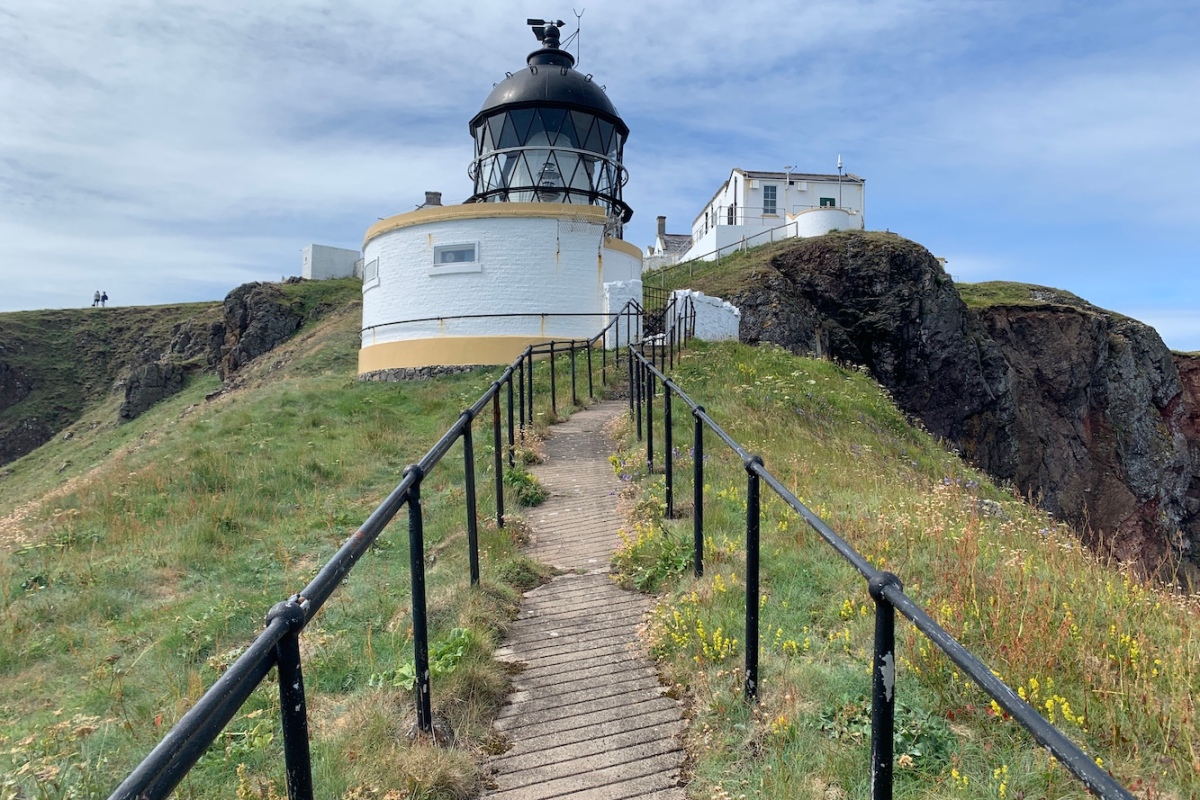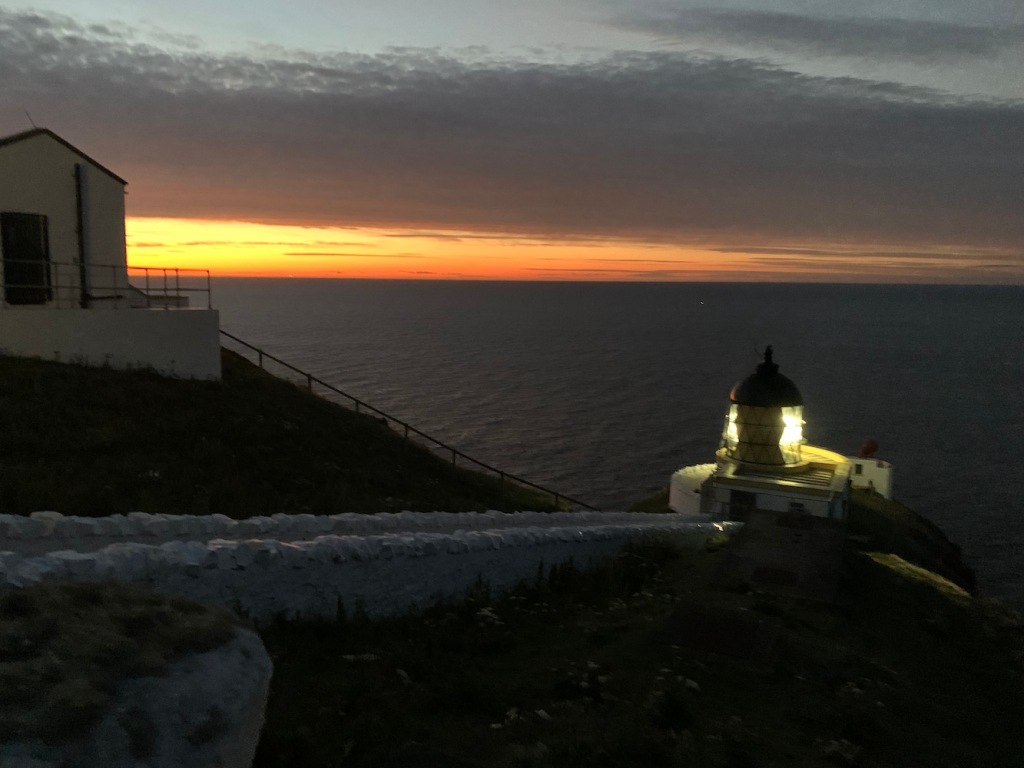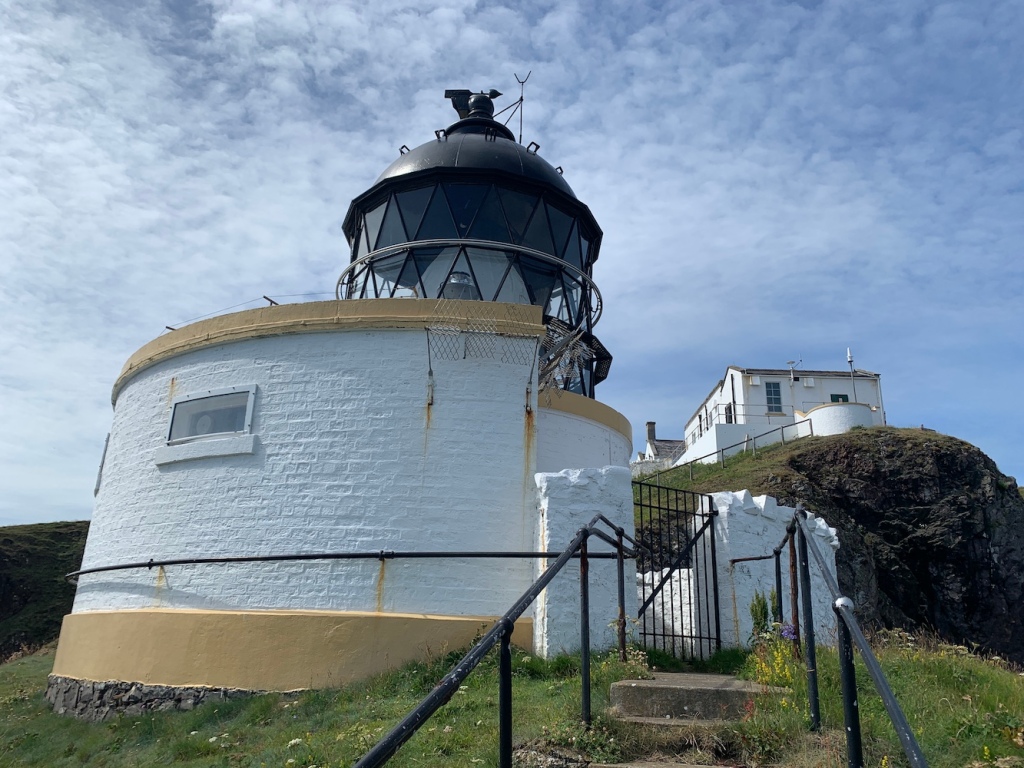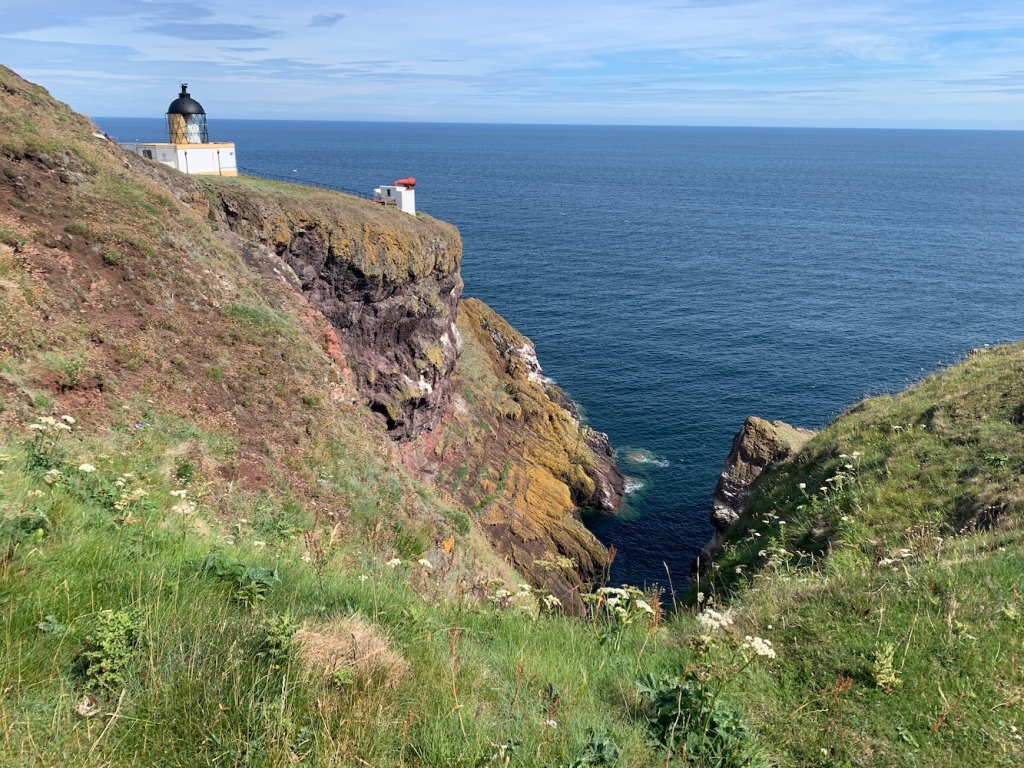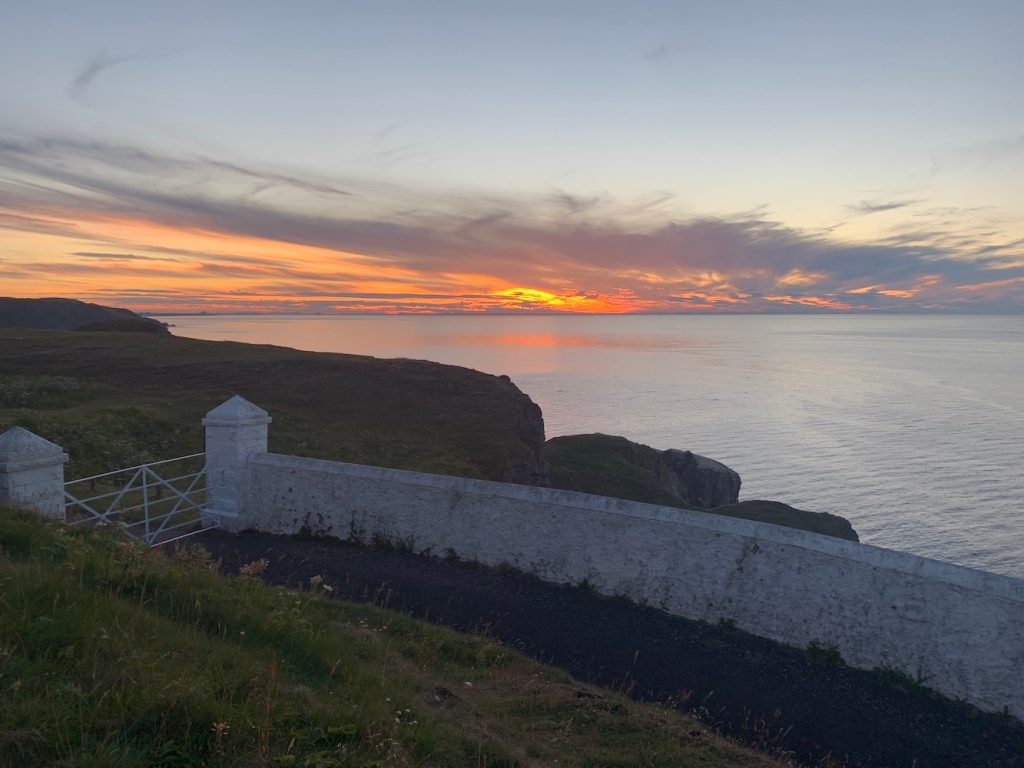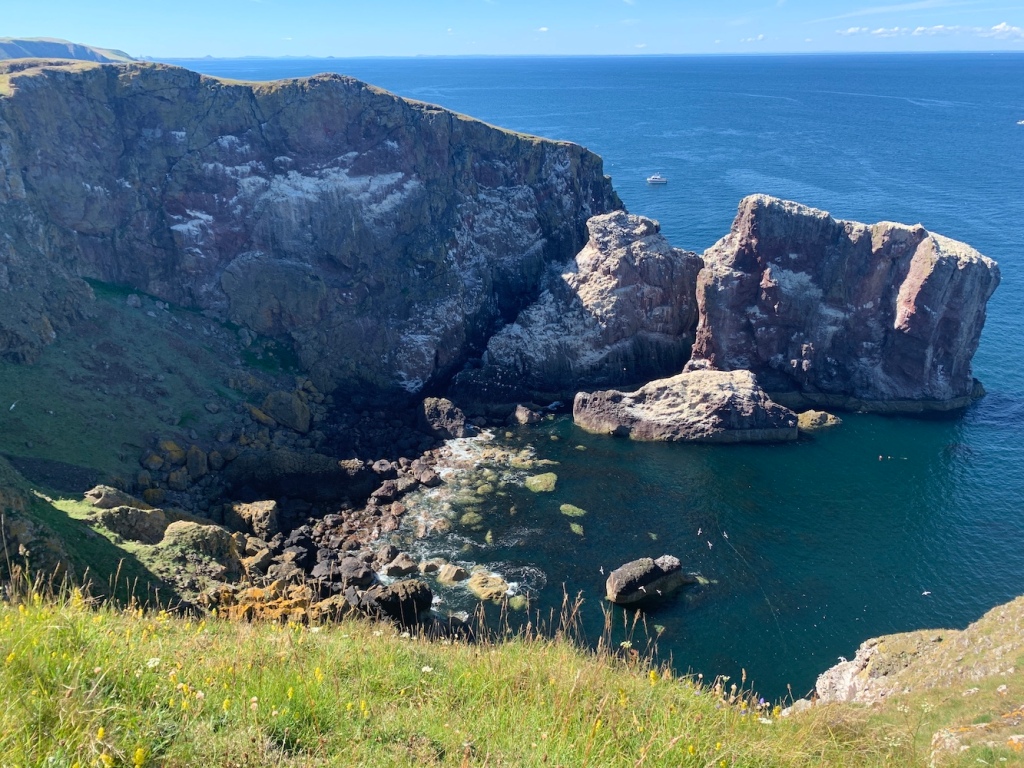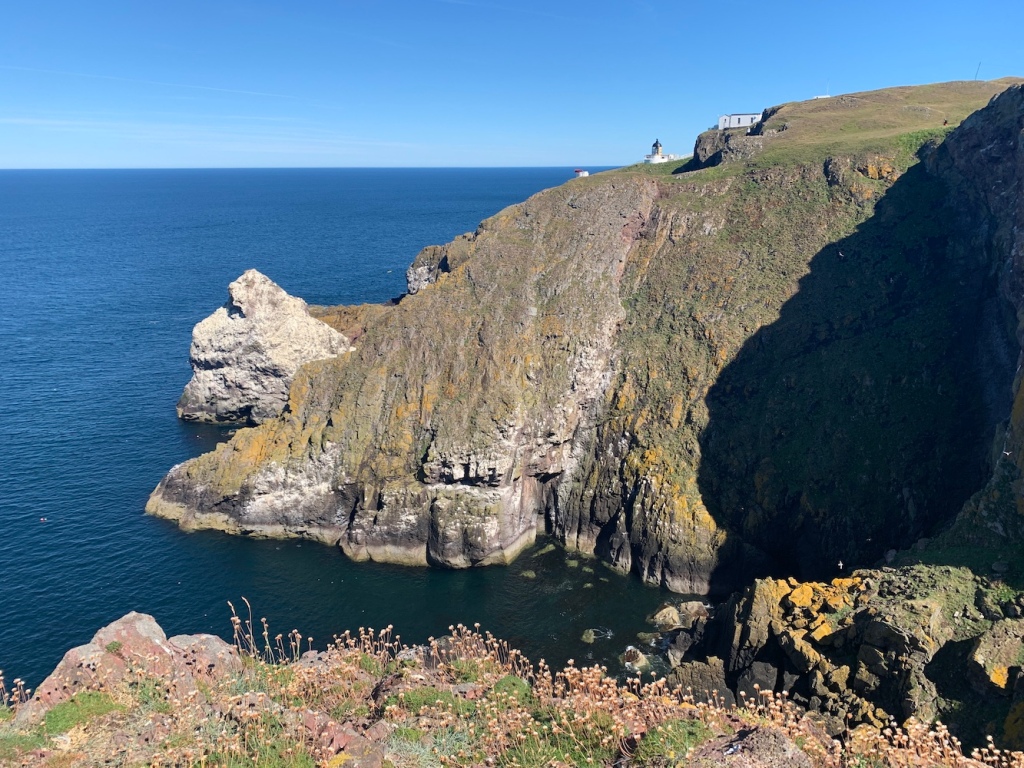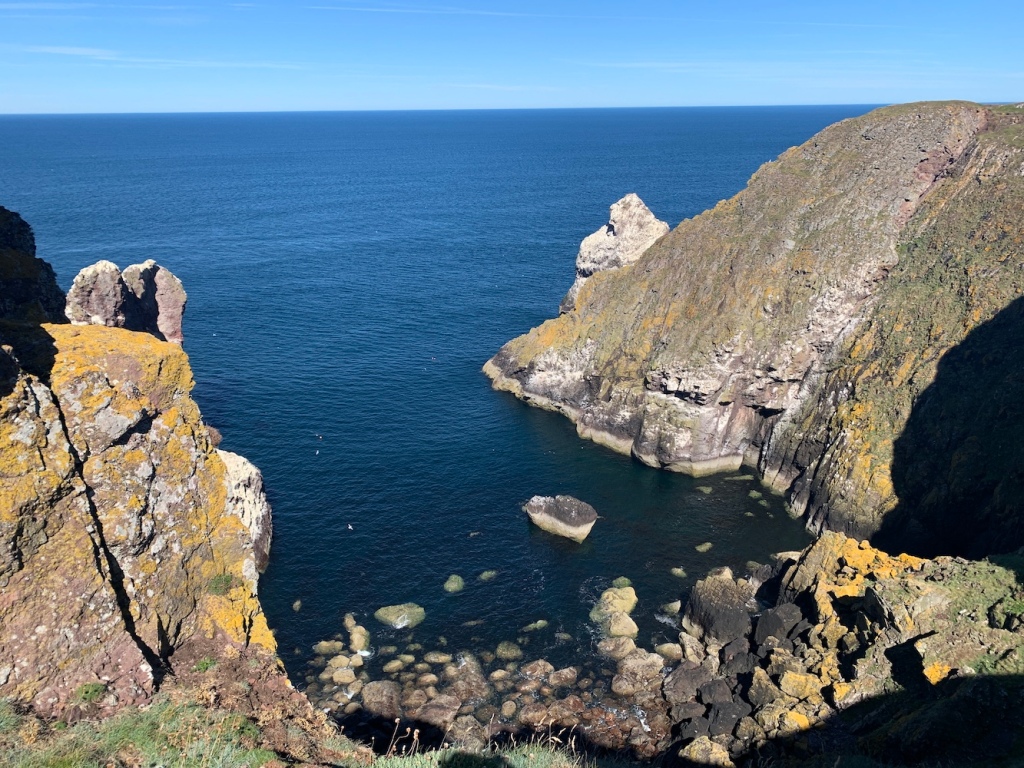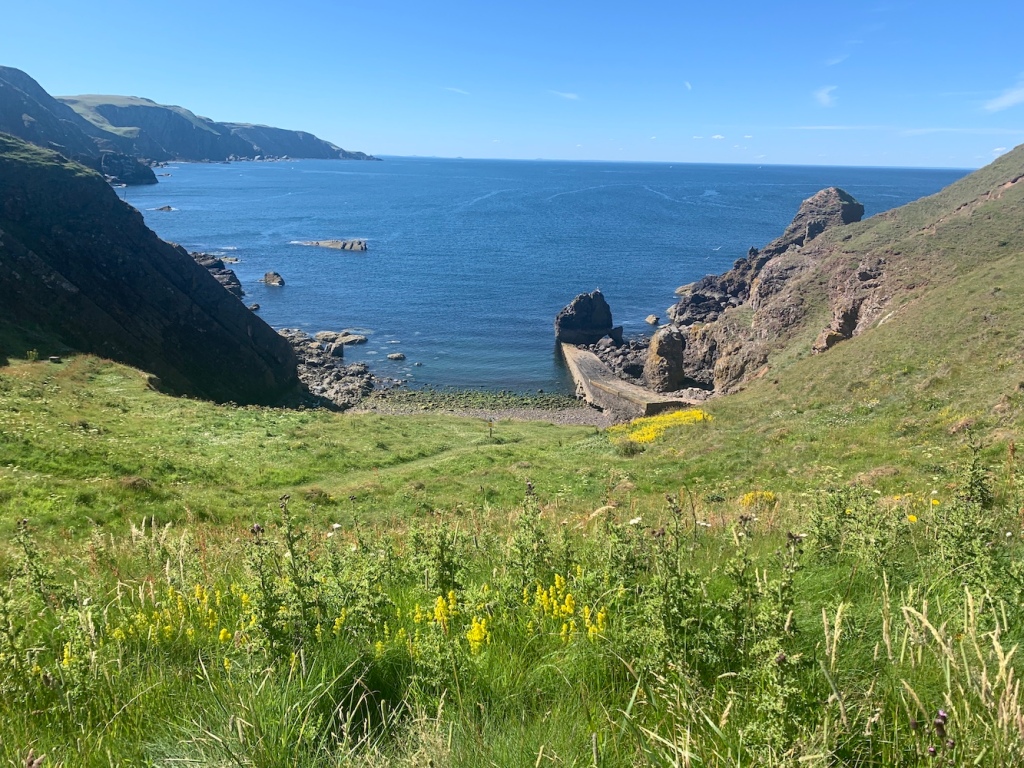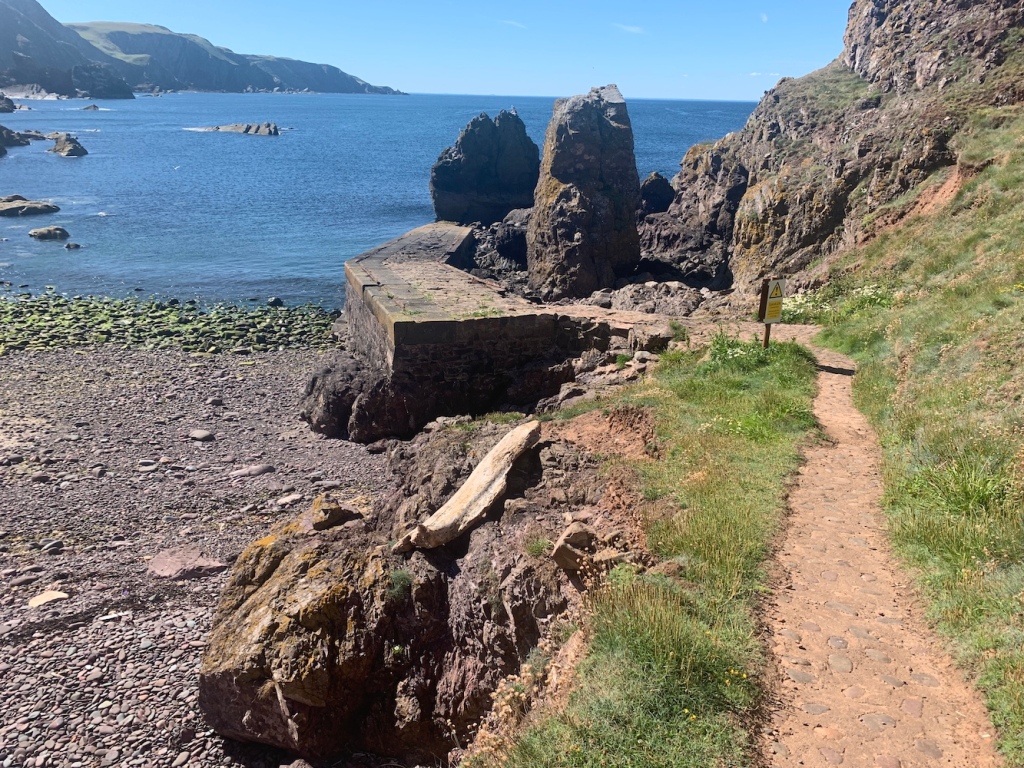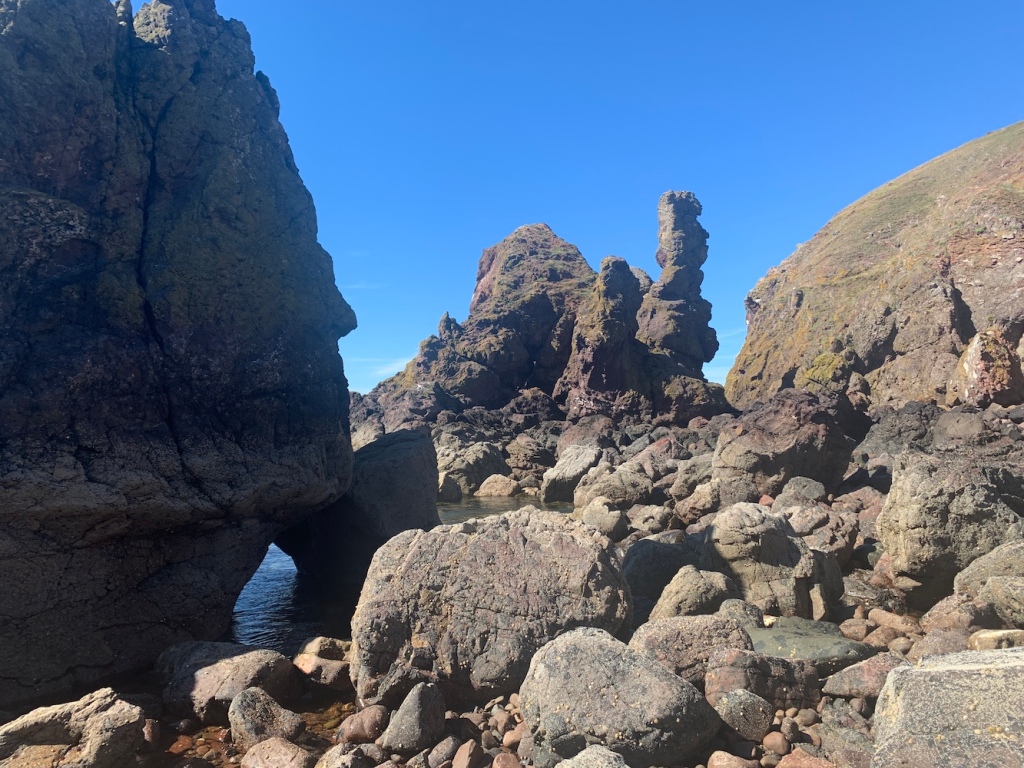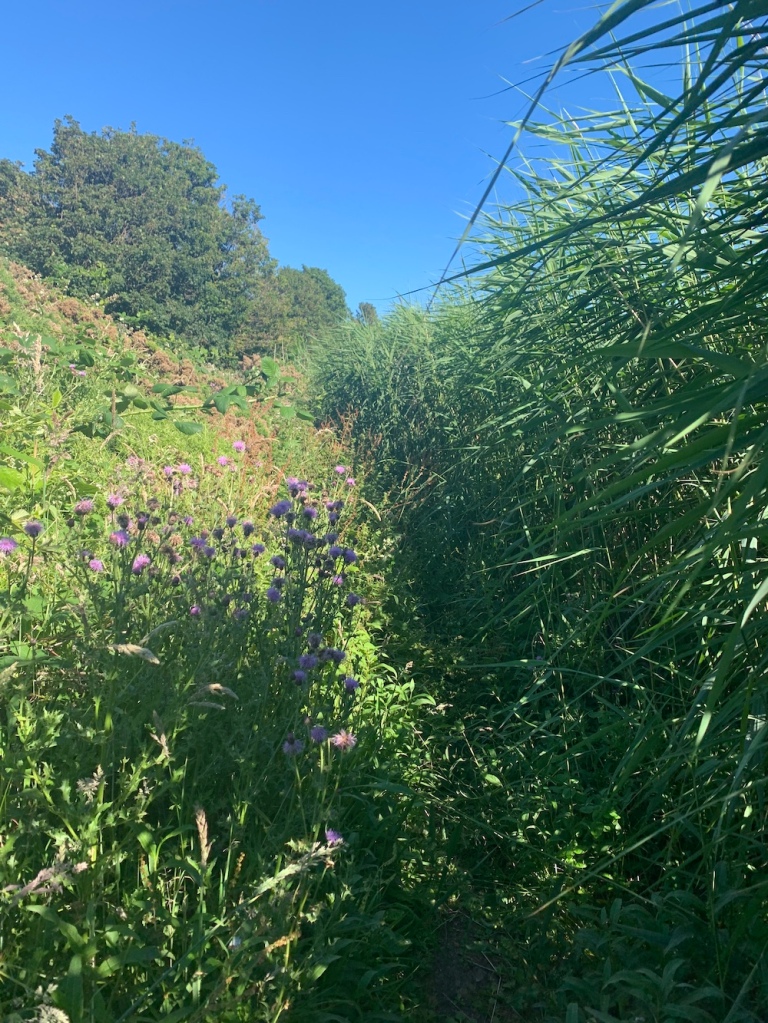It’s been a long time since I’ve had a chance to spend some quality time on the Northumberland coast and one target for this trip was to get a closer look at Coquet Island, a mile off the coast of Amble. I was aware that only wardens were allowed to land on the island so the boat trip with Puffin Cruises seemed the best way to get as close as I could.
The trip also gave a really interesting insight into the history of the island’s lighthouse and the ownership in general. The island has been owned by the Duke of Northumberland since 1753 after changing hands between the church, and various local earls and others with titles over the centuries. When the lighthouse was originally being proposed on the island the Duke at that time stipulated that he wished for it to resemble a castle, hence the castellated tops to the towers of the structure.
There is evidence to suggest that the foundations of the lighthouse and some lower sections predate the lighthouse and are actually the foundations of what was a Benedictine monastery, which was completed in 1841. The lighthouse contains a sector light facing to the south, warning of the hazards of rocks lying just under the water between the south of the island and the mainland.
Although the island is no longer occupied throughout the winter months, it has a long history of occupation and a strong religious connection. Henry of Coquet, a Dane, wished to escape an arranged marriage after experiencing some sort of vision that told him to do so. Arriving in Tynemouth, he gained permission to build himself a small “cell” on Coquet island and lived there until his death in 1127. This is just one example of strange uses and habitation on the island. The Amble and District Local History website features a far more in depth history for anyone interested.
The restrictions on people landing on the island I had originally assumed was due to it being a site for nesting birds. It turns out it is instead that the island’s owner does not wish anyone to land on the island, with the exception of the RSPB wardens and Trinity House staff (though it was suggested that he’s not keen on the latter landing either, but the maintenance of the lighthouse is essential). As with the nearby Farne Islands, I expect that if Coquet was set up to accept visitors it would currently be closed due to Avian flu as its bird population has been very badly affected.
It was a good boat trip with very knowledgeable crew. I was quite nicely surprised at how close it actually got us to the island. It’s certainly worth doing the trip to get a closer look at the island and lighthouse. It’s also a great way to get a better look at the little light on the end of the pier in Amble.
We followed the boat trip with a visit to the beach to the south of Amble where we had great views across to Coquet 🙂





